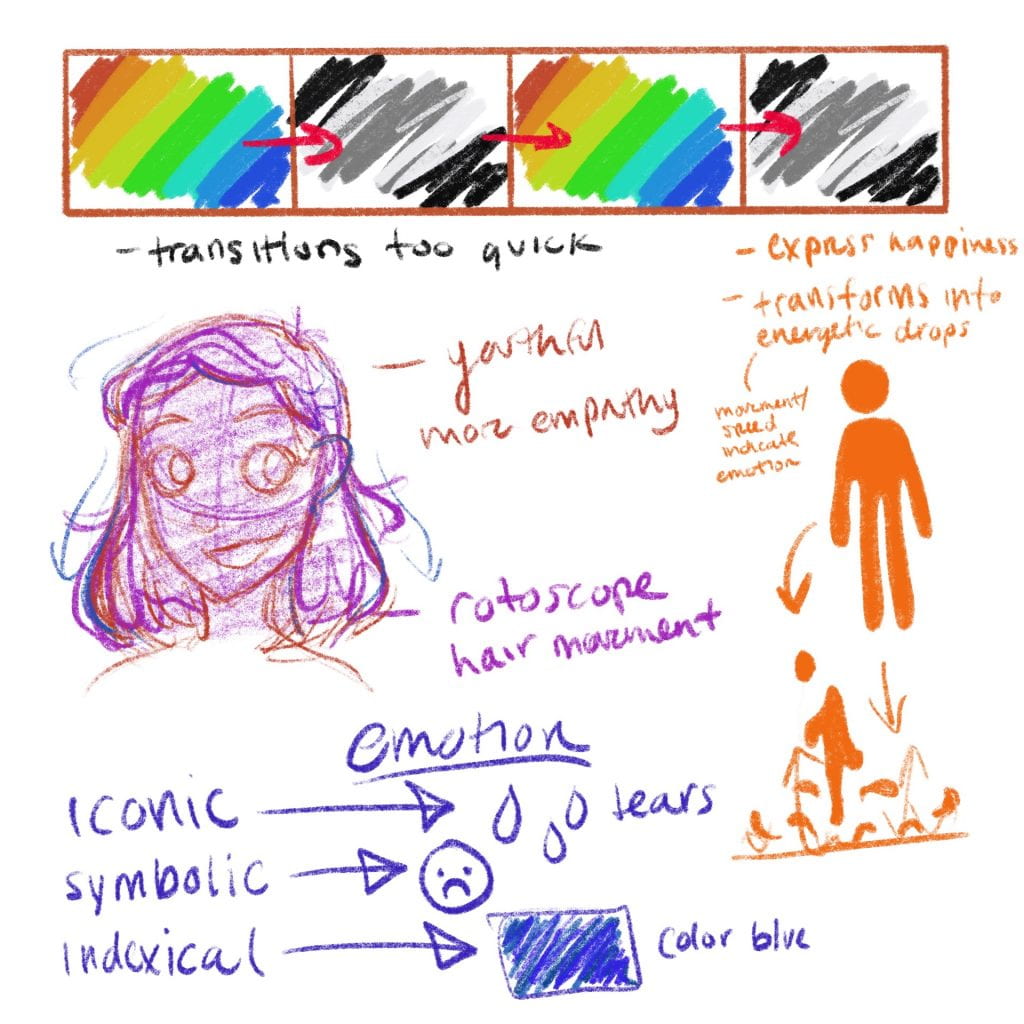I found this lecture to be really insightful, the lecturer really took her time in explaining the reasoning behind certain techniques and how they benefit a work. One of the ideas that resonated with me was the fact the form of animation can influence the content. I never realized that the materials or techniques can inspire how artists develop their pieces. Particularly, one artist mentioned during the lecture missed the feeling of sand and wanted to use sand as her medium because of that, which shaped how she animated and what her subjects were. I always find myself thinking of a concept before materials, and I’d love to try and think of materials first to see how I would go about that type of process and how it varies form my normal way of going about animating.
I also thought it was interesting that the James mentioned how a drawing will always be an interpretation, no matter how realistic it can be. I think that can make an animation more personal, especially when many use rotoscoping to make them more realistically. One piece called Towers successfully used that technique to portray the Texas University shooting. Personally I did not enjoy watching the film. I think it is so important to educate and express opinions on mass shootings but I did not appreciate the way it was executed. First, I have conflicting views when rotoscoping is used, as it is a great method to see and capture movement accurately, but it takes away from the artist’s originality in that they are not the ones drawing the compositions from scratch, but tracing footage, even if they did film it themselves, it discredits how so many other artist hand animate. I think the constant switching between real life historical footage, live interviews, and animated scenes and interviews was very confusing. I focused more on the switches than the content which was supposed to be the main focus. The various textures were distracting, some grainy while others were super smooth and bright. I loved the points James made about portraying the victims as younger because they are more likely to be empathized with and capture attention, but I think throwing in footage of the real victims was confusing at times. She also mentioned how the voice actor interviews were less emotional and in some ways doing the real victims wrong. The scenes of the animated police man saying “he shoulda, coulda” compared to the real footage was such a drastic difference, the latter being more impactful while the animated one lacked regret and almost seemed sarcastic. I also did not like the way the footage switched from color to black and white. The scenes did not flow together well because the color aspect was distracting, some being vivid while others were monochrome.
One technique I would love to try is the use of loop animations in my pieces with narration voice overs. Like in the last film shown, Spirit Away, I liked the idea that simple shots can be so elusive but are complimented so nicely with sound. Although in that film, the simple animations can be left to be interpreted to the viewer, a concept that I find very difficult to grasp. I like knowing concrete facts, why is it made, what is it saying, and I found that piece to be very hard to read but I love the way it was executed and the textures the artist used to get her points across. I want to be able to use such subtle clues, and simple drawings to get across strong messages as well.

